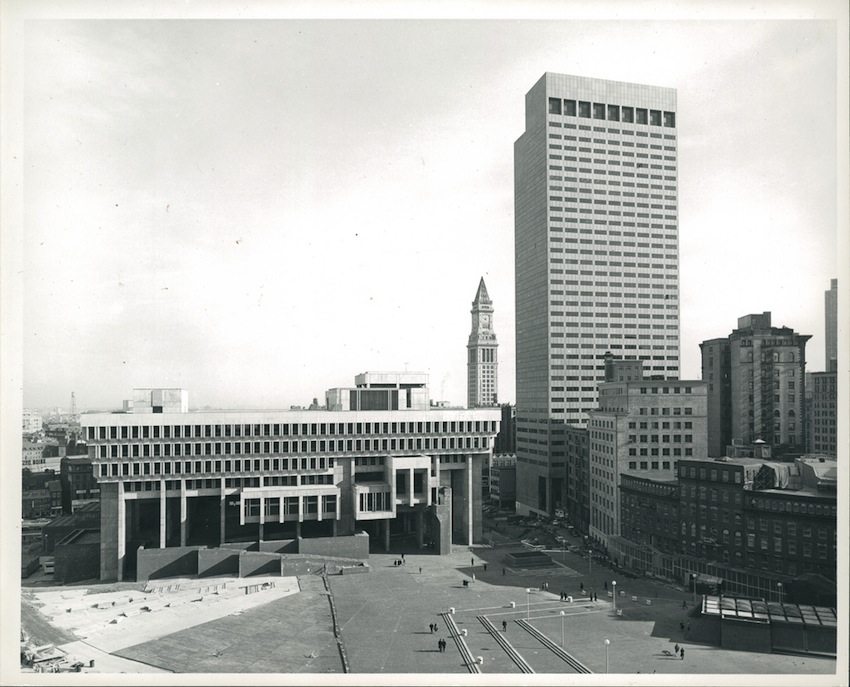Throwback Thursday: When Boston’s City Hall Was New (and Already Unloved)

“Boston City Hall” by City of Boston Archives on Flickr
When Boston’s City Hall was formally dedicated 45 years ago this week, the imposing concrete structure had already created “controversy,” a polite way of saying that most people found it hideous. At the ceremony and in the days after, city leaders argued that with time, we might learn to love the thing.
“I am glad this building is controversial,” Ted Kennedy told the crowd in his speech at the ceremony. “Every important building is controversial. The Parthenon was called ‘remote’ because it was set upon a hill; and Faneuil Hall was called ‘a scar upon the landscape.’ I think we owe a debt of gratitude to those who had the vision to design this city hall and those who had the courage to accept the design.”
The Globe, too, ran an editorial arguing that the public would come to accept the “Jewel of the New Boston.”
[T]he mere passage of time, we predict, will render the building acceptable to many of the traditionalists who now condemn it. Meanwhile, the sturdy, dignified welcoming edifice of brick and concrete offers myriad perceptual delights to all who are not intellectually or emotionally wedded to the architectural norms of yesterday.”
Fast forward 45 years, and the predictions haven’t exactly been borne out. City Hall still has a few defenders, but the common man remains pretty unconvinced by the ugly mass and the vast, empty space around it. So, too, do the city’s leaders. Mayor Tom Menino proposed demolishing it. (When it was named one of the world’s ugliest buildings, he said, “This is great news for tourism in Boston. It proves we really do have it all—the most historic places in the world and the ugliest building in the world.”) During his successful campaign, Mayor Marty Walsh, too, suggested leveling it and selling it off to private developers. Globe columnist Paul McMorrow made a Reagan-esque plea to tear the thing down last year, arguing that not only is it ugly, it’s also waste of space:
City Hall is so ugly that its insane upside-down wedding-cake columns and windswept plaza distract from the building’s true offense. Its great crime isn’t being ugly; it’s being anti-urban. The building and its plaza keep a crowded city at arm’s length.
So, sorry to Ted Kennedy, but the structure never quite managed to take on a Parthenon-like place in the hearts of Boston residents he promised it would. Still, he hoped its dedication would help “make sure that Boston will be as powerful and positive a symbol of New England life in the future as it has been in the past,” and whatever you think of City Hall, there’s no reason we can’t continue aspiring to that goal.


